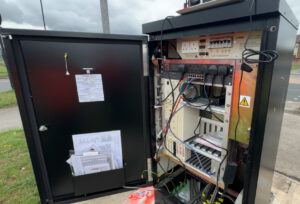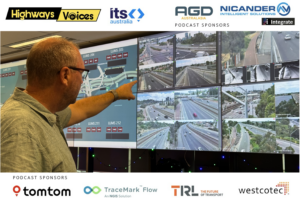Transport data specialists from both sides of the globe have told an audience of British and Australian Intelligent Transport Systems experts that working to clear data standards are crucial to delivering safe, efficient and sustainable transport networks in the future.
The ITS2 event co-hosted by ITS Australia and ITS (UK) explored the potential for data both in the current landscape and what it can mean for the future.
They heard from three experts; Stephen Owens, Chief Operating Officer of Intelematics, Ian Cornwell, Technical Principal at Mott MacDonald and Schalk van der Westhuizen, Regional Manager for Australia in the Intelligent Mobility Solutions Division of Mobileye.
Stephen explained to the audience how a report into Mobility as a Service had identified data interoperability as a challenge and that standards are a key issue. “When you have private sector and public sector, with different levels of investment, there is still the ability to work together to create and share data for the betterment of what we’re all looking to achieve,” he said. He pointed to the old RDS-TMC standard for data transfer used via FM radio that was used across the automotive industry as a simple example of the value of data standards. “Clearly, we needed to capture a whole lot of information and manipulate it to be able to broadcast to that standard,” he explained, “which we did achieve.”
In his contribution, Ian Cornwell pointed out how good standards lead to wide adoption, highlighting the success of the DATEX II format across Europe. “It’s been a really successful European standard, with uptake not just by road authorities but by the private sector too,” he said, “not just making a spec that sits on the shelf. It’s known for its original highway traffic management focus but is expanding to enter new applications, like parking, electric vehicle charging… supporting urban applications.”
The meeting also heard how Mobileye, an Intel Company, is using its vision-based collision avoidance systems to not only boost road safety by providing real-time safety warnings, but that these same systems can perform detailed interpretations of the road scape, enabling passive collection of mobility and roadside asset data. Mr Schalk van der Westhuizen, Mobileye ‘s Regional Manager for Australasia, said that “our technology is already being utilized around the globe by municipalities and councils who are looking for a more efficient method of traffic flow and mobility intelligence management”.
“Certainly the ecosystem is getting bigger and more complex,” concluded the webinar’s host, ITS Australia CEO Susan Harris. “With more players to integrate across parallel industries such as smart cities and the energy ecosystem, the better understandings and insights we can gain from data – the more impact we have hve on improving are transport network efficiency. .”
The whole event, including a fascinating panel discussion, will be available to watch on the ITS Australia and ITS (UK) websites.
(Picture – Yay Images)






















